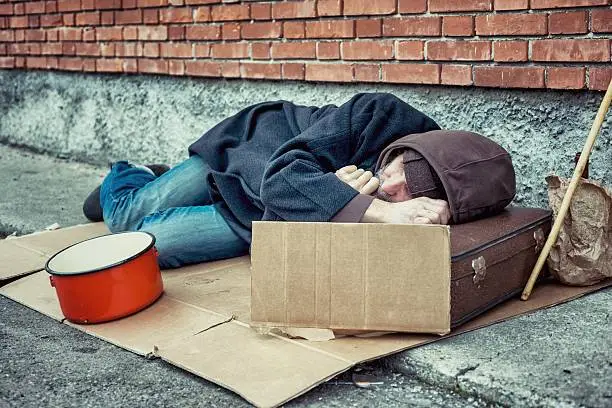Uruguay, a Latin American nation known for its wealth and social equity, faces a rising homelessness challenge.
Despite a population of just 3.5 million, the number of homeless people in its capital, Montevideo has surged.
The World Bank cites Uruguay as a model of low poverty in Latin America, yet Montevideo’s streets tell a different story.
Homelessness there has grown significantly, with a 24% jump since 2021 and 55% since 2019, based on MIDES statistics.
Fernanda Auersperg of MIDES points to multiple causes for this issue, notably the country’s prison system.
Uruguay sees a high incarceration rate, with a daily influx of released prisoners. This cycle poses a huge hurdle for social services.
More than half of Montevideo’s rough sleepers have been in jail, with many repeatedly.
Juan, who has been homeless for six years, observes that many of his peers have faced imprisonment.

Rodrigo Lopez, 21, has not been jailed but sees the impacts among shelter residents, including those monitored by electronic tags and former inmates.
Many shelter seekers aim for a better life, according to Rodríguez. Some still battle drug habits but return to the shelters for sleep and food.
Others choose the streets over shelter rules, despite the cold.
Rodríguez himself aims to improve his life, driven by the love for his daughter, Naomi. His journey to recovery from drug use is motivated by her.
MIDES reports a grim reality: most of Montevideo’s homeless are men, average age 39, struggling with drug use.
A striking 90% are drug users, and 72% use drugs like cocaine paste and alcohol daily.
Alejandro battles with his addiction, consuming daily doses of cocaine paste. Yet, he strives to earn a living through odd jobs rather than begging, making around $20 daily.
Rodolfo, open about his alcoholism, understands the choices leading to homelessness.
MIDES Findings – Uruguay’s Capital Grapples with Homeless Surge
He earns money by selling second-hand items and receives a small monthly subsidy from MIDES. Neighbors often provide him with food.
Two years ago, family issues pushed Perdomo onto the streets. He insists he is addiction-free but has past drug issues.
MIDES found that 40% of the homeless surveyed had received addiction treatment, with 20% having psychiatric hospitalizations.
Alexandro, 46, once homeless and battling schizophrenia, now thrives in a self-managed home for people with mental disorders.
This innovative MIDES-supported project provides him with a sense of dignity and community.
Auersperg commends such innovative solutions, urging tailored and varied approaches to address the complex problem of homelessness.

